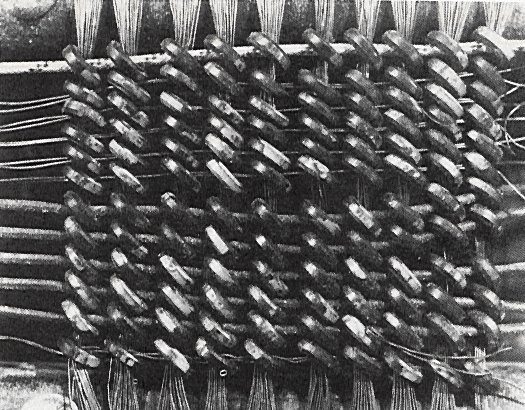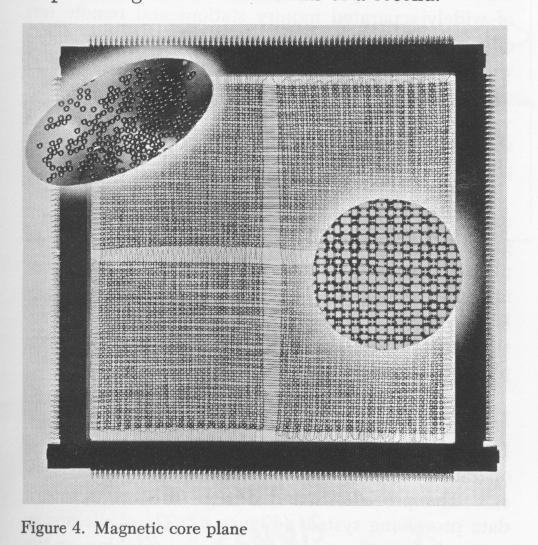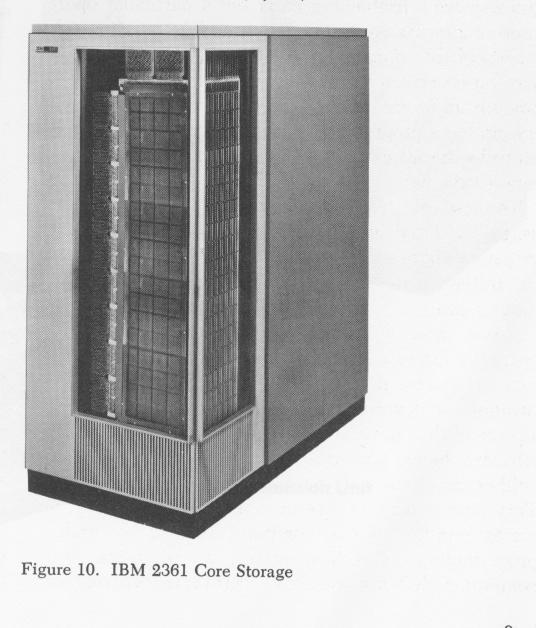Core Memory

Above: The first magnetic core memory, from the IBM 405 Alphabetical Accounting Machine. The photo shows the single drive lines through the cores in the long direction and fifty turns in the short direction. The cores are 150 mil inside diameter, 240 mil outside, 45 mil high. This experimental system was tested successfully in April 1952.

Of course IBM 360 core memory was much more advanced and denser. The photo shows a magnetic core plane of the type used in the 360.

The IBM 2361 Core Storage Module housed 16K bytes of core memory. You can see the core planes (and the individual cores, i.e. bits) through the glass doors.

Core memory diagram, illustrating coincident current selection. The half-select current applied through the indicated vertical and horizontal lines are each too small to switch the cores through which they pass. The one core in the center of the figure is switched, however, by the coincidence of the two currents. A former IBM employee tells me that when IBM first decided to manufacture core memory, they consulted with the Lifesaver company on fabrication methods.
Allen J. Palmer adds (March 2005): "I am part of the Computer History Museum 1401 Restoration Project team (729's being my area for this project). I was looking at your web page on core memory. Do you have a page with the full diagram of the core wiring layout. There were 4 wired passing through each 'donut' -- X & Y plus the read wire which sensed the flip of the core at read out by the magnetic field developed when the core flipped & that field 'cut' the read wire & inducted an 'electrical impulse' which was then amplified and became the 'read out data'. A 4th wire was the 'inhibit' wire used prevent some core from flipping' I have an old 4k 1401 memory core sitting out on my work bench gathering dust for the last 25 years. Someday I need to clean it up & build a case with a light & a magnifying glass so people can see how we did it in the 'old days'."
Most recent update: Tue Sep 28 10:23:29 2010
Source: [4].
Links:
- The IBM 737 Magnetic core storage unit (1954, for the IBM 701)
- Core Memory: A Visual Survey of Vintage Computers
Frank da Cruz / fdc@columbia.edu / Columbia University Computing History / Jan 2001